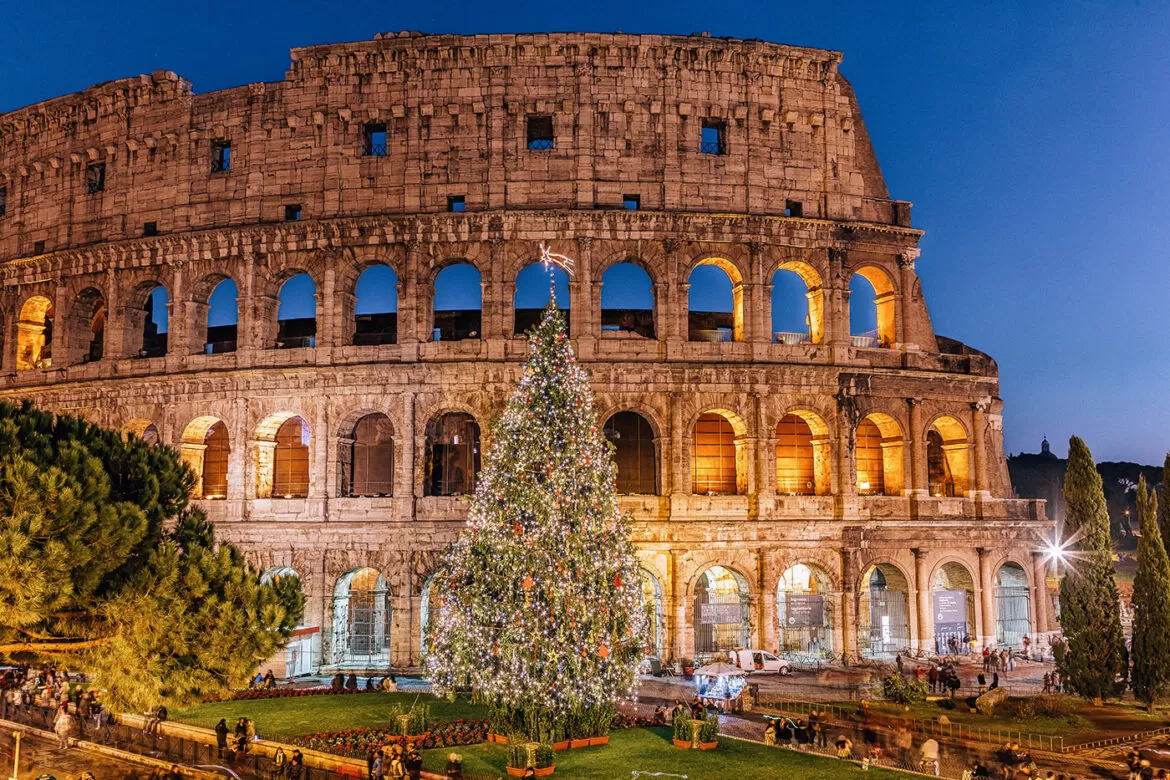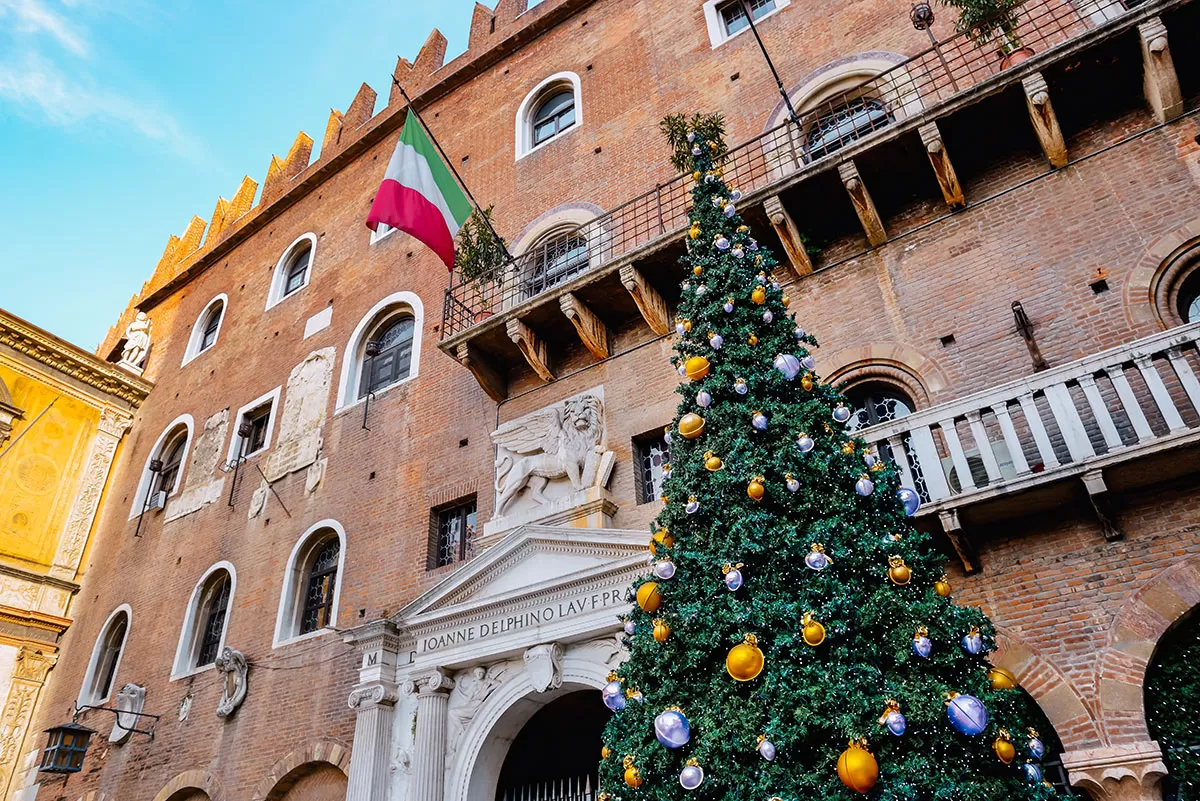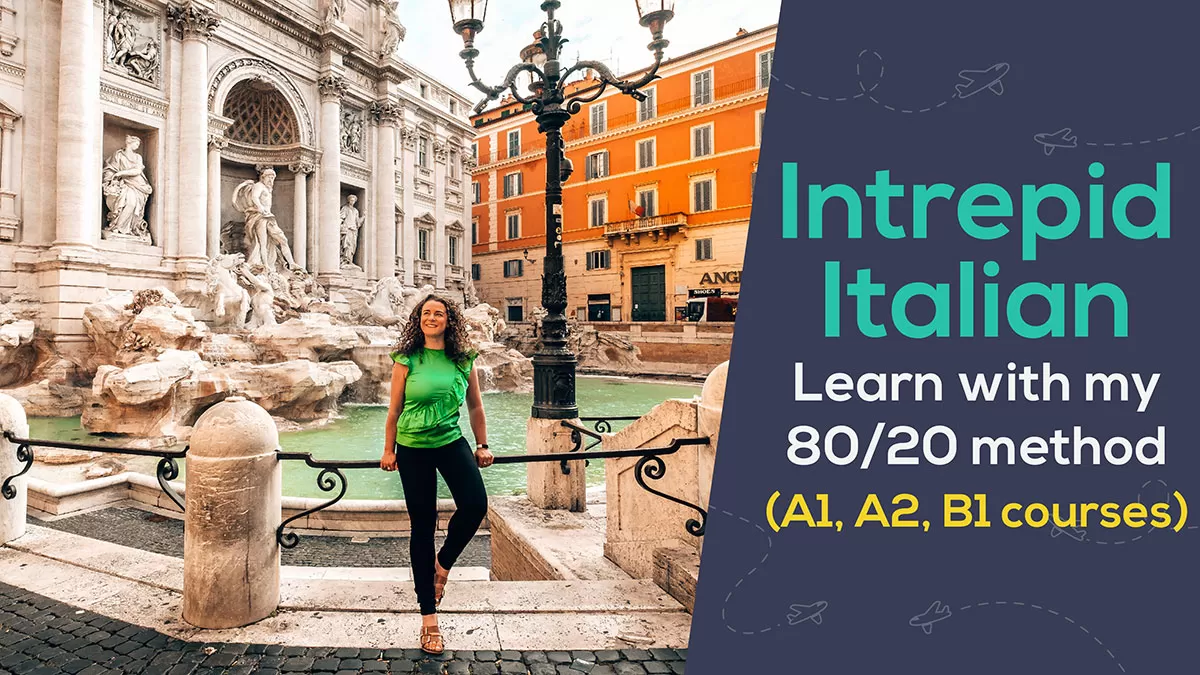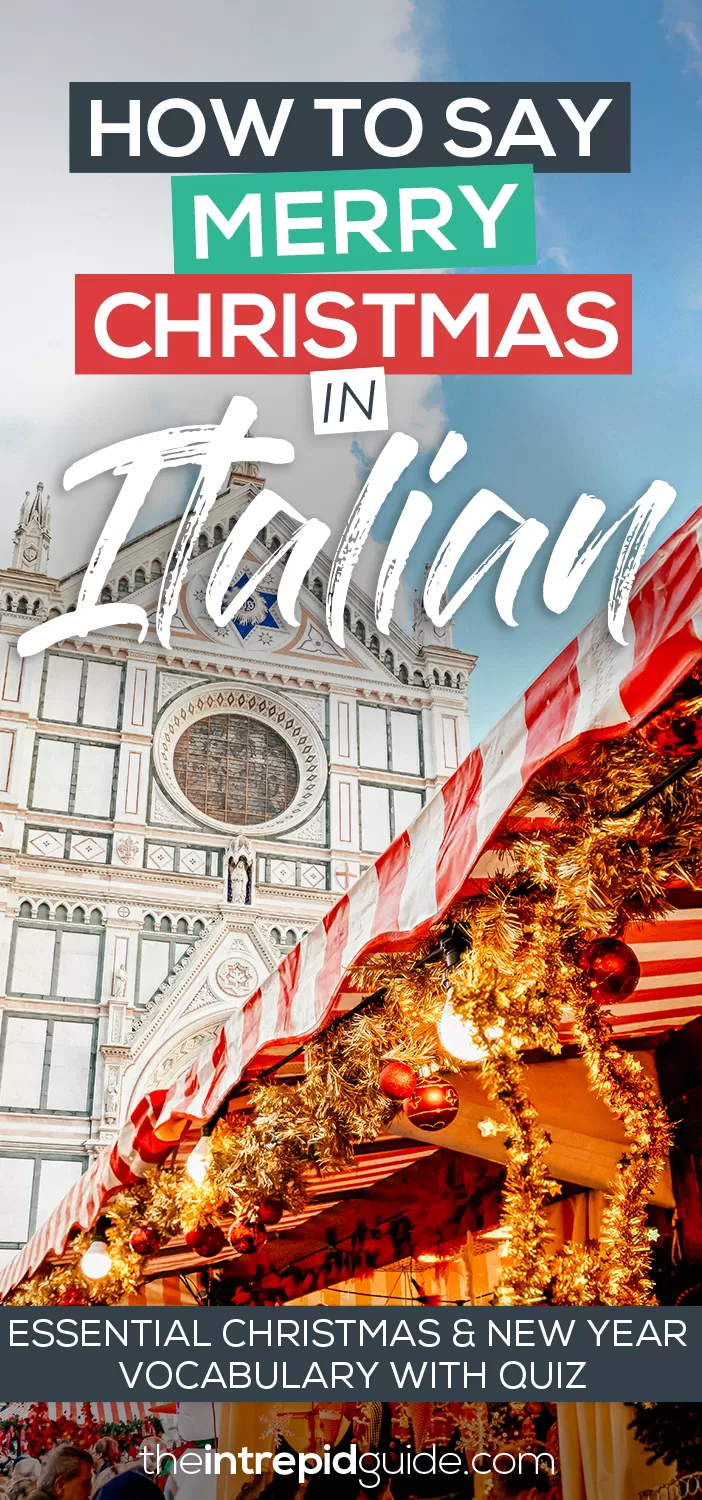With Christmas just around the corner, it’s time to refresh your memory on (or learn) some Italian Christmas vocabulary and traditions, so that you’ll make un figurone (a great impression) when greeting your Italian friends or family at this magical time of year!
Whether you’re simply curious about Italian traditions or want to pick up some useful words or phrases, this guide is just for you. We’ll go through the most important moments of this holiday season while discovering essential expressions and greetings you might come across during your Christmas stay in Italy or when reuniting with your Italian loved ones.
In every section of this guide, you’ll get an insight into some Italian traditions as well as a list of essential vocabulary Keep reading till the end, where you’ll find a quiz to test yourself and see if you’re ready to become the new master of Italian Christmas!
Italian Christmas Greetings and how to write an Italian Christmas greeting card
Let’s start with some Italian Christmas greetings. In Italian, the most common way you’ll hear people say “Merry Christmas” is with: Buon Natale!
You can take this a step further and add “I wish you a…” before it and say: Ti auguro un buon Natale!
One small side note. When greeting someone on Christmas, you’ll probably address a friend or family member or someone you know quite well, in which case it is correct to use “ti” in the expression above. However, you have to use “Le” when addressing someone formally (or someone you don’t know well) and “vi” when addressing a group of people, thus being:
- Le auguro un buon Natale! (I wish you a Merry Christmas!) – Formal
- Vi auguro un buon Natale! (I wish you a Merry Christmas!) – When addressing more than one person
A more neutral alternative to this is the phrase that corresponds to the English “Happy holidays”: Buone feste!
Another option is to use the versatile word “Auguri” or the expression “Tanti Auguri” (literally: wishes / many wishes), which are used on other occasions as well, such as birthdays, anniversaries or to congratulate with someone on having a baby, getting married, graduating and much more.: (Tanti) Auguri!
In Italian, when you want to wish someone a “Happy New Year”, you say Felice anno nuovo!
Other options are: Buon anno! / Auguri per un felice 2025!
To all the expressions above you can respond by repeating the same expression and/or with “altrettanto” (same to you), or “anche a te/Lei/voi” (and to you – informal, formal, all).
Buon Natale Laura! – Buon Natale (anche a te), Cristina!
There are of course other ways to greet someone in the holiday season, many of which are often used in Christmas greeting cards too. Here is an example of how to write to one for your loved ones:
Caro/a/i/e XXX, (Dear XXX,)
Ti scrivo per augurarti un sereno Natale e un felice anno nuovo. (I’m writing to wish you and your family a peaceful Christmas and a happy new year.)
I nostri migliori auguri per un Natale pieno di gioia e amore. (Our very best wishes for a Christmas full of joy and love) /
Tanti auguri per un sereno Natale in compagnia dei vostri cari. (Many wishes for a peaceful Christmas in the company of your loved ones.) /
Io e Carla vi auguriamo un Natale pieno di amore e felicità! (Carla and I wish you all a Christmas full of love and happiness!) /
Buone feste e tante belle cose per il nuovo anno! (Happy holidays and many good things for the new year!)
Saluti (Greetings) / Con affetto (With love)/ Un abbraccio (A hug)
[Your name}
December 8th: Let’s get started!
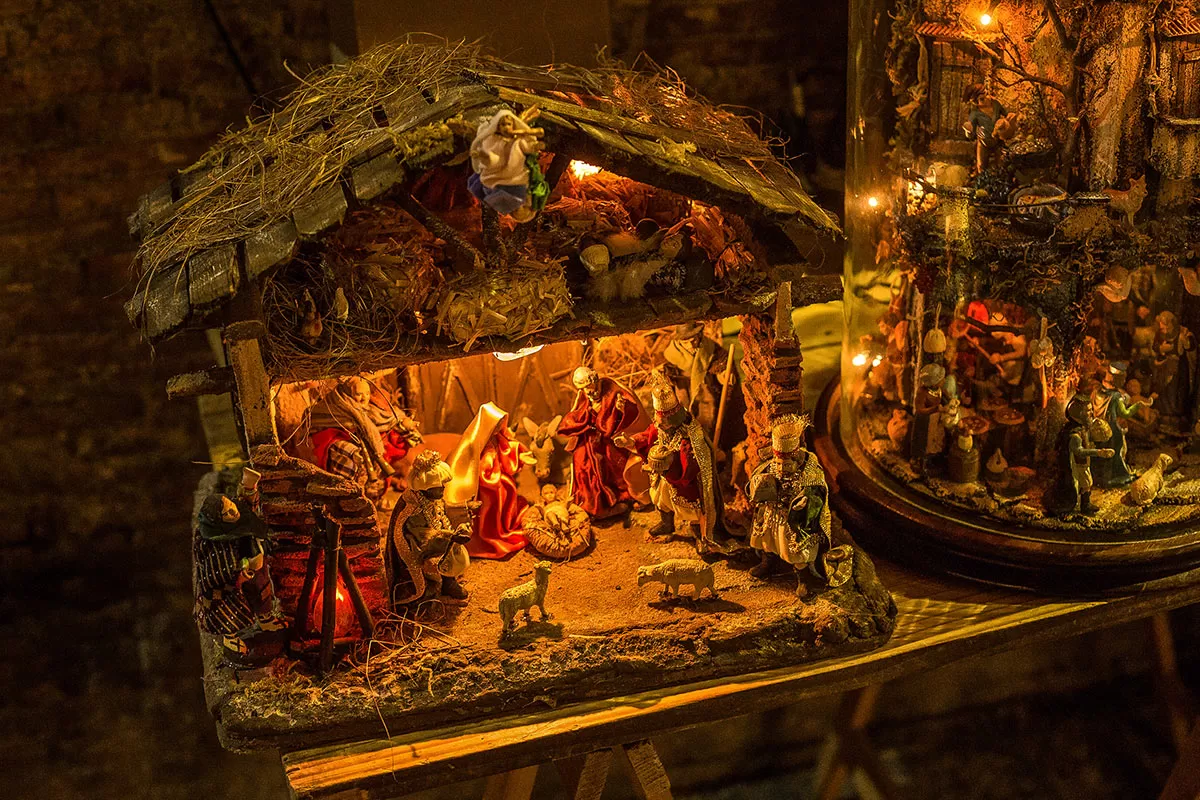
On this day Italians also prepare the presepe, that is, the nativity scene with the statues and figures of the Christian tradition: St. Joseph, Mary, Baby Jesus (usually placed in the crib at midnight between the 24th and the 25th), the ox, the little donkey, the shepherds. Those are the main ones. Many nativity scenes are placed inside the house next to the Christmas tree but some people put a lot of effort into making huge ones with a lot of statues and details and like to display their nativity scene by putting it outside on the balcony or in the garden so that everyone who passes by can admire it.
Creating a presepe is a very old and important tradition. In Naples, this is a real form of art. As a matter of fact, this city is famous for its handmade nativity scenes and shepherds’ statues created by passionate artisans.
Another very popular tradition that can be found almost everywhere in Italy, is the one of the presepe vivente, a living nativity scene that represents and recreates the time when Jesus was born, in a rural village, with people wearing typical costumes.
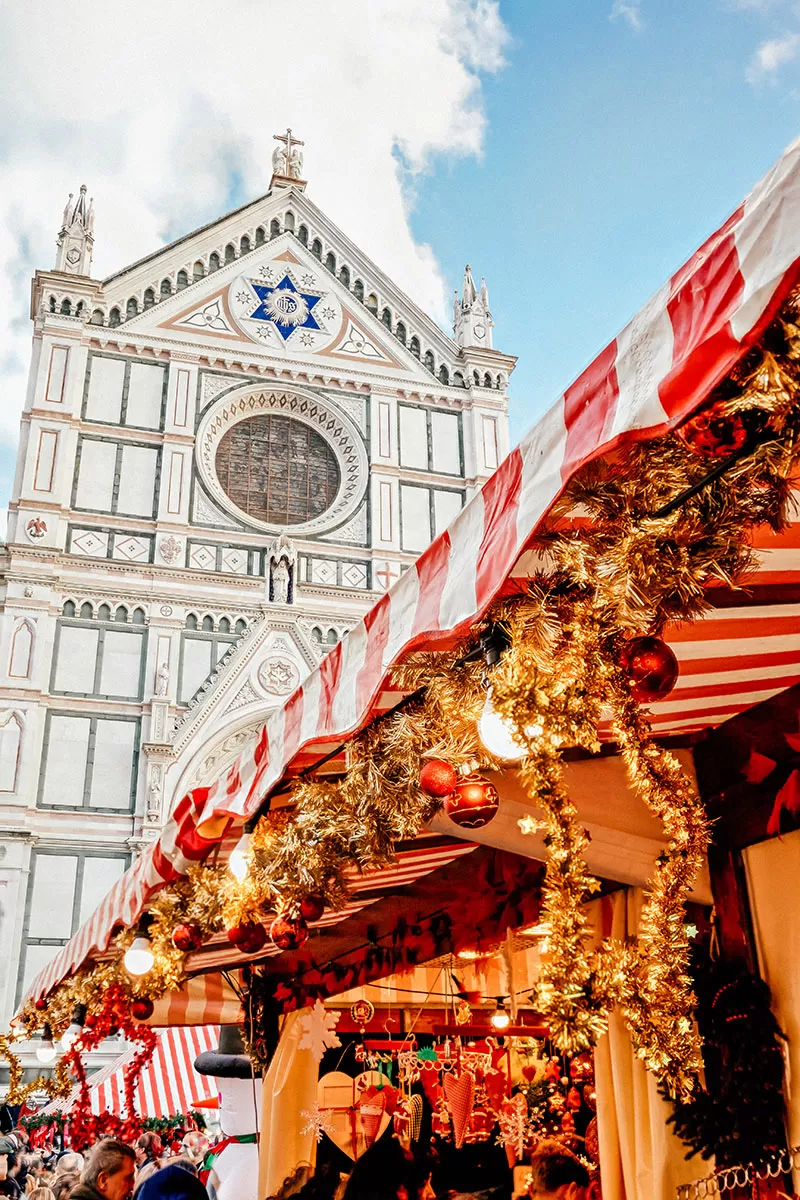
Christmas holidays are also the perfect occasion to spend a una settimana bianca (literally “a white week”) in the mountains: this is the annual tradition, most popular in northern Italy, to flock to the mountains to ski and frolic on the slopes while also relaxing at the spa, eating delicious winter food and soaking up some vitamin D in the sun.
Italian Christmas vocabulary: Part 1
| L’immacolata concezione | The Immaculate Conception |
| L’atmosfera natalizia | Christmas atmosphere |
| Il giorno festivo | Public holiday |
| L’albero di Natale | Christmas tree |
| Le palline | Christmas balls |
| Le luci | Lights |
| La stella | Star |
| La ghirlanda | Wreath |
| La candela | Candle |
| Il fiocco / Il nastro | Ribbon |
| L’agrifoglio | Holly |
| La corona dell’avvento | Advent crown |
| Il calendario dell’avvento | Advent calendar |
| L’avvento | Advent |
| La calza | Stocking |
| Il camino | Fireplace |
| L’angelo | Angel |
| Gli addobbi | Ornaments |
| Le statue | Statues |
| Maria, San Giuseppe e Gesù Bambino | Mary, St. Joseph and Baby Jesus |
| La culla | Crib |
| I pastori | Shepherds |
| Il bue e l’asinello | Ox and little donkey |
| Il presepe | Nativity scene |
| Il presepe vivente | The living nativity scene |
| I mercatini di Natale | Christmas markets |
| Il vin brûlé | Mulled wine |
| I regali di Natale | Christmas presents |
| Le castagne | Chestnuts |
| Le caldarroste | Roasted chestnuts |
| Le frittelle | Fried pastries |
| Il bastoncino di zucchero | Candy cane |
| Il pan di zenzero | Gingerbread |
| L’artigianato | Handcraft |
| I canti / Le canzoni di Natale | Christmas carols |
| La neve | Snow |
| Il pupazzo di neve | Snowman |
| Il fiocco di neve | Snowflake |
| La settimana bianca | Ski week |
| Il biglietto di auguri | Christmas greeting card |
Who brings the gifts?
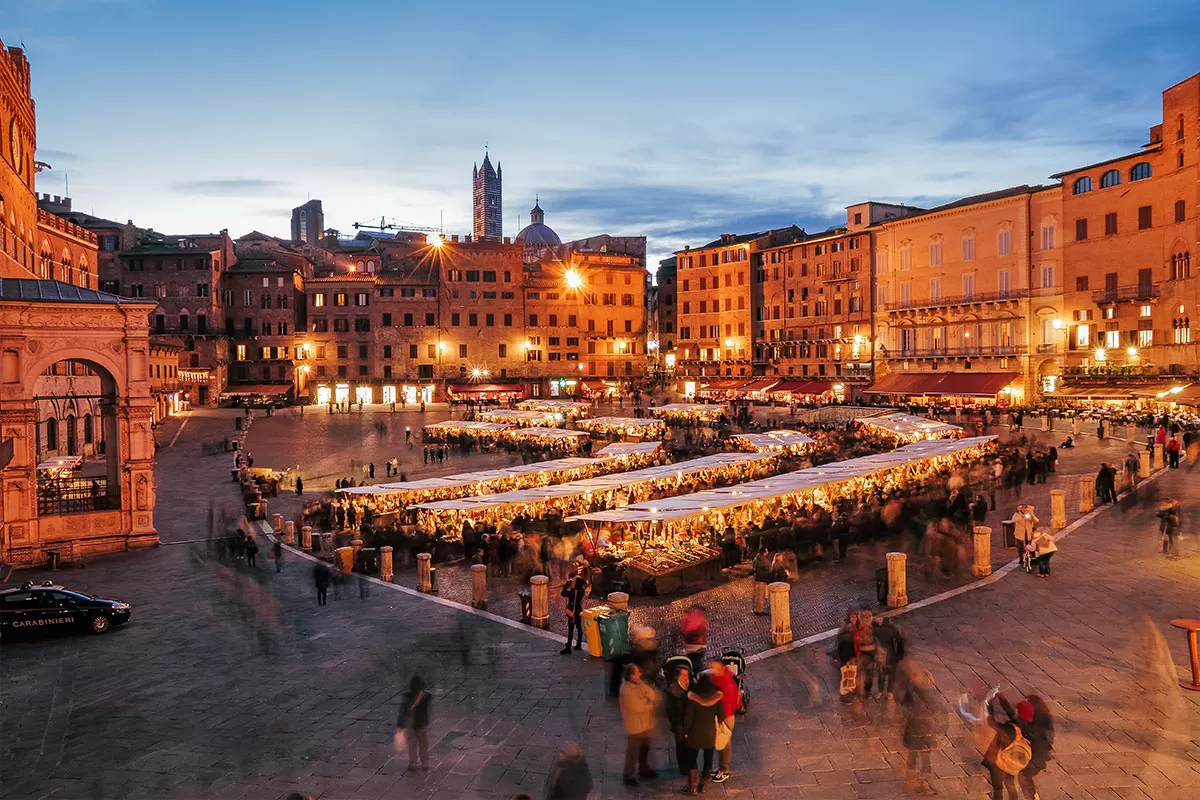
But that’s not all: in many areas of Italy, there are other important figures who do the honours of gift-giving in December: for example, San Nicola (Saint Nicholas) in Puglia, on the night between the 5th and the 6th. Or Santa Lucia (Saint Lucy), on the night between the 12th and the 13th, who brings presents accompanied by her little donkey in exchange for a glass of milk, some biscuits and some mandarins, which children carefully put on the kitchen table the night before. Beyond being a tradition in Scandinavian countries, Saint Lucy is worshipped in some areas in the north of Italy and in Sicily.
Italian Christmas vocabulary: Part 2
| I regali | Presents |
| I doni | Gifts |
| Babbo Natale | Santa Claus |
| Il Polo Nord | North Pole |
| Le renne | Reindeers |
| La slitta | Sleigh |
| San Nicola | Saint Nicholas |
| Santa Lucia | Saint Lucy |
Christmas is here!
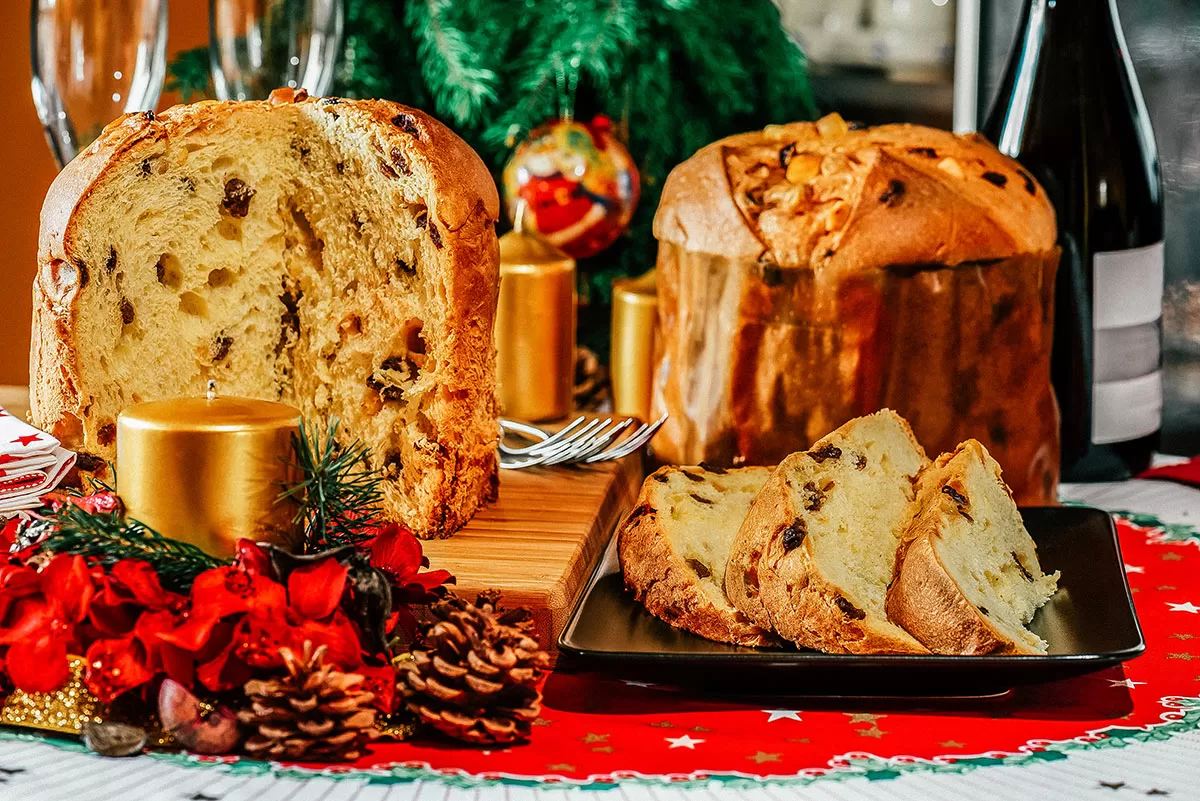
Panettone is a loaf of sweet bread originating from Milan. Its original recipe is with raisins and candied fruits, but it can now be found in all kinds of variations: with chocolate, hazelnuts, almonds, lemon cream, cinnamon and apples, figs and many more.
Pandoro is another Christmas sweet bread, originally from Verona, but unlike panettone, it has no raisins nor candied fruits inside. It is a buttery yeast bread, which is usually served with icing sugar on top and mascarpone cream, making it insanely sugary and sweet!
So which team are you on? Pandoro or panettone? Let me know in the comments below.
As for the gift-opening, some people unwrap their presents (which are normally found under the Christmas tree) on the 24th (just before the midnight mass) while others prefer to wait for the morning on the 25th to open them.
For lunch, the whole family (normally with relatives as well) reunites and have a massive pranzo (lunch) at a restaurant or at someone’s house. Traditional Christmas dishes include tortellini in brodo, sea food, fish dishes and panettone, pandoro and torrone (a rectangular shaped nougat sweet made of honey, sugar and egg white, with toasted almonds or other nuts) for dessert.
The afternoon is typically spent playing cards or board games such as tombola (a game similar to bingo), the card game Mercante in fiera (Merchant at the Fair), or watching a Christmas movie.
But, hey, the show is not over yet! The day after Christmas is a public holiday too and celebrations go on for Santo Stefano (Saint Stephen’s Day), the equivalent of Boxing Day in Anglo-Saxon countries. On this day, most Italians gather with family again and eat leftovers from Christmas and just chill out.
Italian Christmas vocabulary: Part 3
| La Vigilia (di Natale) | Christmas Eve |
| La messa di mezzanotte | Midnight mass |
| La chiesa | Church |
| Il cenone | Christmas Eve’s dinner (lit. “the big dinner”) |
| Festeggiare | To celebrate |
| Brindare | To toast |
| Aprire / Scartare i regali | To open / unwrap presents |
| Il pranzo di Natale | Christmas lunch |
| I tortellini in brodo | Tortellini in broth |
| I frutti di mare | Seafood |
| Il pesce | Fish |
| Il panettone e il pandoro | Christmas sweet bread loafs |
| Il torrone | Nougat |
| I film di Natale | Christmas movies |
| Giochi da tavola | Board games |
| Il giorno di Santo Stefano | Saint Stephen’s Day |
| Gli avanzi | Leftovers |
3, 2, 1… Happy New Year!
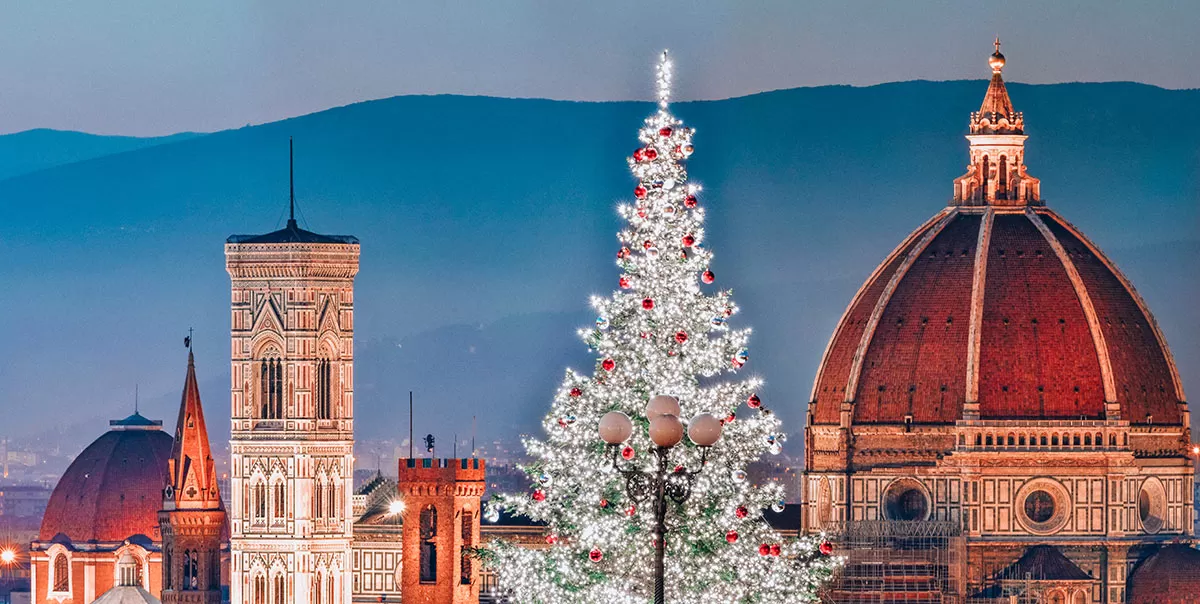
There’s always a lot of excitement around New Year’s Eve, which comes with the unmissable New Year’s resolutions. A well-known custom in Italy is to wear red underwear on the 31st of December because this colour is believed to attract good luck.
Italians typically celebrate New Year’s Eve with another cenone, a grand dinner during which it is customary to eat lentils. Wonder why? Their coin-like shape represents money and is, therefore, a symbol of richness and wealth that you wish for the coming year. Find out more about this and many other Italian traditions and superstitions here.
New year’s Eve is normally spent with friends who gather at someone’s house or at the restaurant and then go in the piazza (square) to celebrate and countdown till the new year. Drinking Spumante (sparkling white wine) and watching spectacular fireworks are a must on this day, and, at the stroke of midnight, couples renew their love by kissing under the mistletoe.
Italian Christmas vocabulary: Part 4
| San Silvestro | Saint Sylvester (December 31st) |
| L’ultimo dell’anno / la Vigilia di Capodanno | New Year’s Eve |
| Capodanno | New Year’s Day |
| I buoni propositi (per il nuovo anno) | New Year’s resolutions |
| L’intimo rosso | Red underwear |
| Le lenticchie | Lentils |
| La piazza | Square |
| Il conto alla rovescia | Countdown |
| Lo spumante | Sparkling white wine |
| I fuochi d’artificio | fireworks |
| Il vischio | Mistletoe |
Epiphany and Befana: The end of all feasts
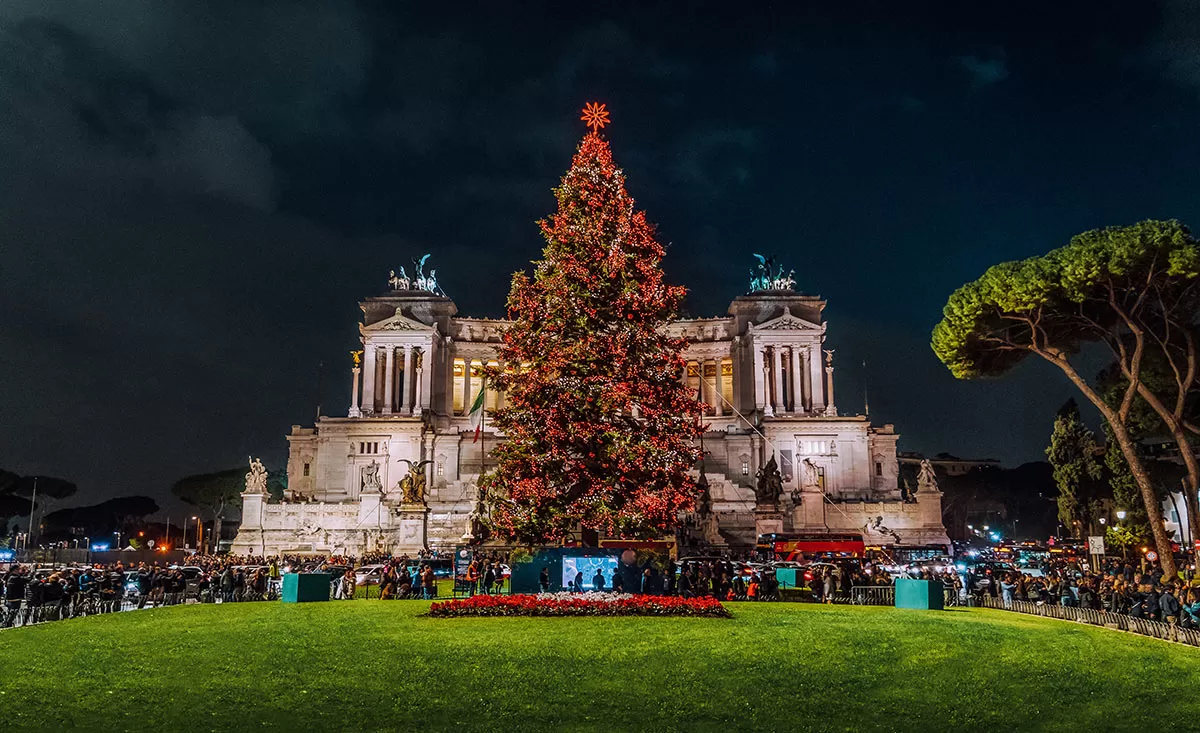
According to the Christian tradition, on this day the Three Wise Men (or Kings) also referred to as the Biblical Magi, guided by the comet, travelled to visit Jesus in the nativity hut right after his birth, bringing gifts of gold, frankincense, and myrrh.
Alongside this religious feast (which is also a public holiday in Italy), there’s a pagan tradition that says that, on the night between the 5th and the 6th January, a witch-like character called Befana, travels on her broomstick to bring sweets and small gifts to all well-behaved children. To the naughty ones, however, she would only bring a lump of coal (which is actually a liquorice-flavoured piece of dark sugar).
This folkloristic figure is very popular and well known in Italy and children love her just as much as Santa Claus, however, she is not famous outside Italy.
The day before il giorno della Befana (Befana’s day), children usually prepare the stocking on the fireplace, which they hope will be filled with chocolate, candies, sweets and little toys.
The day of the Epiphany is also the day when the Christmas tree and all Christmas decorations and ornaments are taken down.
Italian Christmas vocabulary: Part 5
| L’Epifania | Epiphany |
| I (tre) Re Magi | The Three Wise Men (or Kings) |
| La capanna | Nativity hut |
| La stella cometa | Comet |
| Oro, incenso e mirra | Gold, frankincense and myrrh |
| La strega | Witch |
| La scopa | Broom |
| Il carbone | Coal |
| Il cioccolato | Chocolate |
| Le caramelle | Candies |
| I dolci / I dolcetti | Sweets |
| I giocattoli | Toys |
| Il giorno della Befana | Befana’s day, January 6th |
Conclusion
Christmas is definitely a big deal in Italy because it stands for long and happy celebrations with family, friends and good food. I hope you enjoyed travelling virtually through these Italian Christmas traditions and customs!
How well do you know your Italian Christmas vocabulary and traditions? Take the quiz!
Before leaving, don’t forget to take the quiz below to test yourself and revise the Italian vocabulary and Christmas traditions you learned!
 Are you a beginner or an intermediate Italian learner? Got a trip coming up or want to communicate with your Italian partner or relatives in Italian? Learn Italian with my unique 80/20 method
Are you a beginner or an intermediate Italian learner? Got a trip coming up or want to communicate with your Italian partner or relatives in Italian? Learn Italian with my unique 80/20 method
Registrations are now open to join Intrepid Italian, my new series of online video courses that use my unique 80/20 method. You’ll go from a shy, confused beginner to a proficient and confident intermediate speaker, with me as your trusty guide.
You’ll finally be able to connect with your Italian partner, speak to your relatives and enjoy authentic travel experiences in Italy that you’ve always dreamed of, and so much more.
As a native English speaker who learned Italian as an adult, I know what it’s like to feel hopeless and lack the confidence to speak. I know what it’s like to start from scratch and to even go back to absolute basics and learn what a verb is!
Intrepid Italian was created with YOU in mind. I use my working knowledge of the English language to help you get into the ‘Italian mindset’ so you can avoid the common pitfalls and errors English speakers make – because I made them once too! I break everything down in such a way that it ‘clicks’ and just makes sense.
No matter what your level is, there is an Intrepid Italian course for you, including:
- 🇮🇹 Intrepid Italian for Beginners (A1)
- 🇮🇹 Intrepid Italian for Advanced Beginners (A2)
- 🇮🇹 Intrepid Italian for Intermediates (B1)
You can join 1, 2, or all 3 courses, it’s entirely up to you. The best part is that you have lifetime access so you learn anytime, anywhere and on any device.
As your guide, I walk you through each lesson, step-by-step, using my unique 80/20 method. My approach is different from traditional methods because I teach you the most important 20% of the language right from the beginning so you can start to speak straight away.
Each course includes video lessons, audio exercises, downloadable worksheets, bonus guides, a private support community, and lifetime access all designed to streamline your learning while having fun.
It even comes with my famous “Celebrate with a Spritz Guarantee”. After 30 days of using Intrepid Italian, if you don’t want to celebrate your newfound Italian skills with an Aperol Spritz, you don’t have to pay a penny! Cheers! 🥂
Join Intrepid Italian here and start learning today!
Ci vediamo lì! (See you there!)
Learning Italian? Check out these Italian language guides
- Italian for Beginners | How to Learn Italian in 3 Simple Steps
- 34 Words That Don’t Exist in Italian (English Loanwords in Italian)
- Italian Culture: 19 Weird Things Italians Do That No One Warns You About
- 17 Weird Italian Superstitions Italians ACTUALLY Live By
- 17 Must-Know Italian Hand Gestures: The Ultimate Guide
- Top 24 Most Important Verbs in Italian (Plus PDF Cheat-Sheet & Quiz)
- 10 Ways Natives REALLY Say ‘You’re Welcome’ in Italian
- How to say ‘Please’ in Italian in 9 Ways Like a Native
- 41 Italian Greetings: How to Say ‘Hello’ in Italian Like a Local
- 125 Most Common Italian Phrases for Travel You’ll Ever Need [PLUS Printable]
- 8 DEADLY mistakes in Italian (& How to Avoid Them)
- How to Conjugate Italian Verbs in 3 Simple Steps [Italian for Beginners]
- Is Italian Hard to Learn? 7 Common Mistakes & How to Avoid Them
- Master Days of the Week in Italian (7 Simple Memory Hacks)
- Italian Numbers: How to Count in Italian From 0 to 1 Billion (Plus PDF Download)
- How to Order Food & Drinks in Italian [Italian for Beginners]
- 15 Italian Words You Should NEVER Mispronounce [& How Not To]
- 11 Effective Hacks That’ll Help You Learn Italian So Much Faster
- Top 14 Italian Words You Should NEVER Say [& What to Use Instead]
- 20 Hilarious Everyday Italian Expressions You Should Use
- Romanesco: 25 Cool Roman Dialect Words You Should Use in Rome
- 10 Reasons Why Learning Italian Will Change Your Life
- 10 Italian Expressions Italians Love Saying
- 10 Italian Phrases That Will Instantly Make You Sound more Italian
- Funny Italian Sayings: 26 Food-Related Insults You Won’t Forget
- 15 Romantic Italian Films That’ll Make You Love Italy Even More
- How to Master Common Italian Phrases for Travel (Like a Local!)
Like it? Pin it for later!
Over to you!
Did you enjoy this guide? What other words would you like to know? Let me know using the comments section below or join me on social media @intrepidguide or @intrepiditalian to start a conversation.
Thanks for reading and I hope you enjoyed this post.
Like what you see? Subscribe using the form below to have all of my posts delivered directly to your email.

